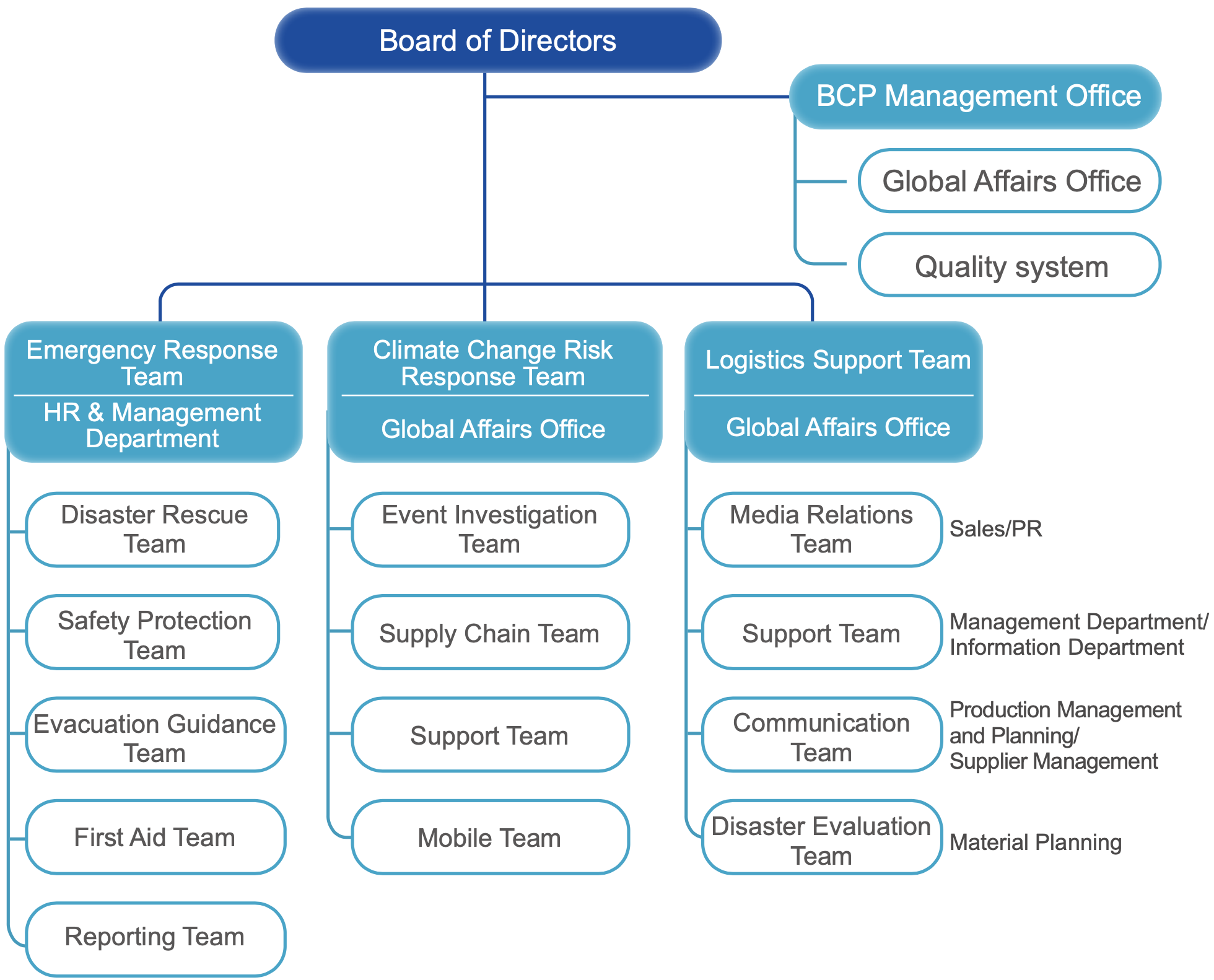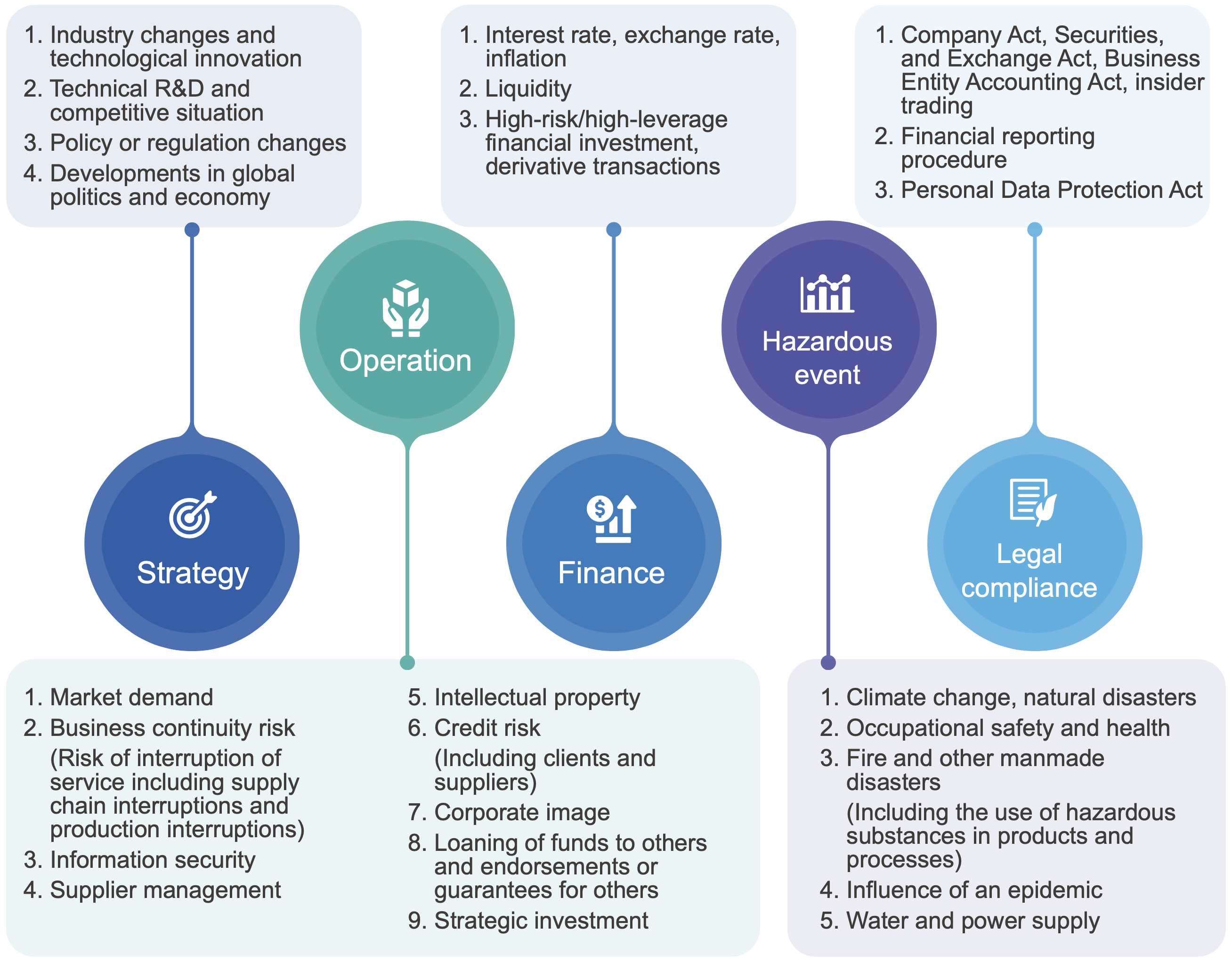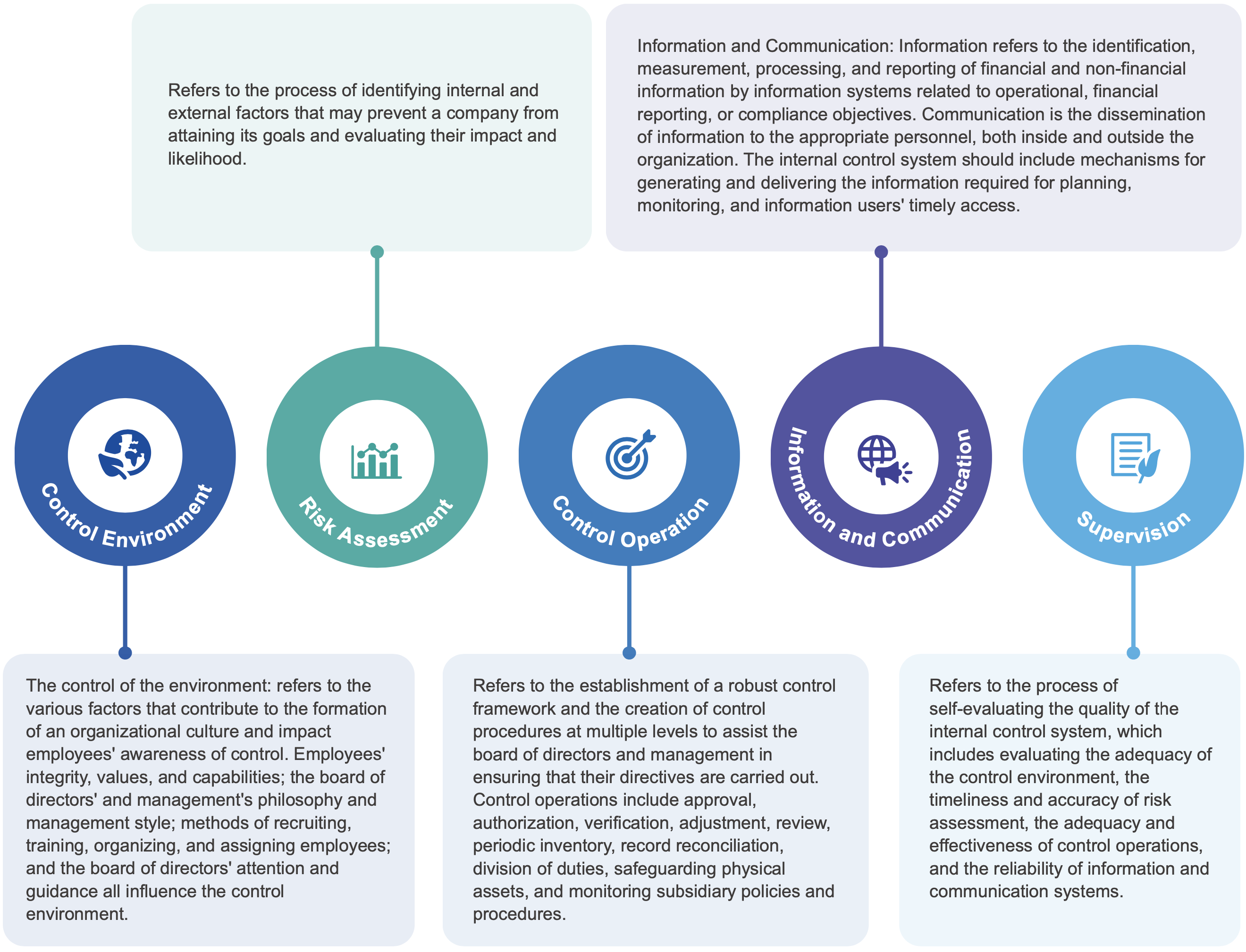Home / ESG / Risk Management
Risk Policy
Risk Management Organization
RichWave has established a cross-functional Business Continuity Planning (BCP) Management Office comprising an Emergency Response Team, Logistics Support Team, and Climate Change Risk Response Team. The General Manager functions as the coordinator of the Management Office, and individuals from different business units are designated to take part in the coordination process. To prevent potential major risks from harming the company, the BCP Management Office conducts rigorous risk evaluation to formulate response strategies, arrange for emergency response measures, as well as carrying out drills from time to time, and engage in ongoing improvement.

Risk Policy and Management Process
To ensure that the company operates in a proactive and cost-effective manner, it integrates and manages a variety of strategic, operational, financial, and hazard-related risks that may affect its operations and profitability. The company enhances the oversight function of its board of directors in the area of risk management. RichWave has established a "Risk Management Policy and Procedures" which has been approved by the board of directors. The company conducts a comprehensive evaluation and management of existing risk factors through the processes of risk identification, risk analysis, risk assessment, risk response and control, and risk monitoring. The company maintains regular monitoring of emerging risks that may potentially have an impact, and endeavors to acquire a comprehensive understanding of the extent of each risk. The company implements appropriate measures and allocates resources to ensure the effective management of relevant risks.
Risk Item Identification and Management
By analyzing the global conditions, industry trends, and regulatory trends, RichWave can identify risks related to five dimensions including strategy, operation, finance, hazardous events, and legal compliance:

In regard to the risk items that may be encountered during the company's day-to-day operations, RichWave has developed a risk and opportunity management protocol to conduct a SWOT analysis based on the company's background. Furthermore, the stakeholders' concerns and appeals are included in the stakeholder risk analysis and controlled by the risk analysis team. In 2023, the three major high-risk items identified include product competitiveness, price competitiveness, and supplier management. Response measures planned and implemented include strengthening product audit, establishing BCP, fortifying supplier management protocol, and the resident management of key suppliers.
To effectively respond to and manage major operational risks, the company's Board of Directors proposed in 2022 that the company should regularly review business interactions with the distributors, their financial and credit conditions, and follow contractual compliance procedures. The BCP Management Office should determine actual risks and implement improvements through the BCP system. The projects carried out in 2023 are:
- Review the list of all distributors/agents and terminate those who have not had any business interactions within the last 2 years.
- TheGlobalAffairsOfficeandCustomerServiceDepartment jointly reorganized the status of distributors and completed a review of distribution contracts for valid distributors/ agents. The Finance Department confirmed credit guarantee standards for distributors/agents, and the President approved the commission percentages for various distributors/agents. Furthermore, business units complied with relevant operational procedures, requiring approved distributors/agents to provide credit guarantees.
Reported the current status of the company's risk management and identification efforts and relevant response measures on December 21, 2023, and approval was obtained from the Board of Directors.
Audit and Internal Control
RichWave has established the "Internal Control System Self-Assessment Procedures," which apply to the company and its subsidiaries and cover all operational activities. The internal control system comprises five primary components: the control of the environment, risk assessment, control of operations, information and communication, and monitoring operations. Each component possesses a distinct set of detailed items.

The effectiveness of the organization's internal control system is evaluated using the above evaluation criteria. We concluded the internal control operations for 2023 on February 29, 2024, confirming the effectiveness of the company's operations, the achievement of efficiency objectives, and compliance with laws and regulations, and releasing an internal control system statement approved by the board.




